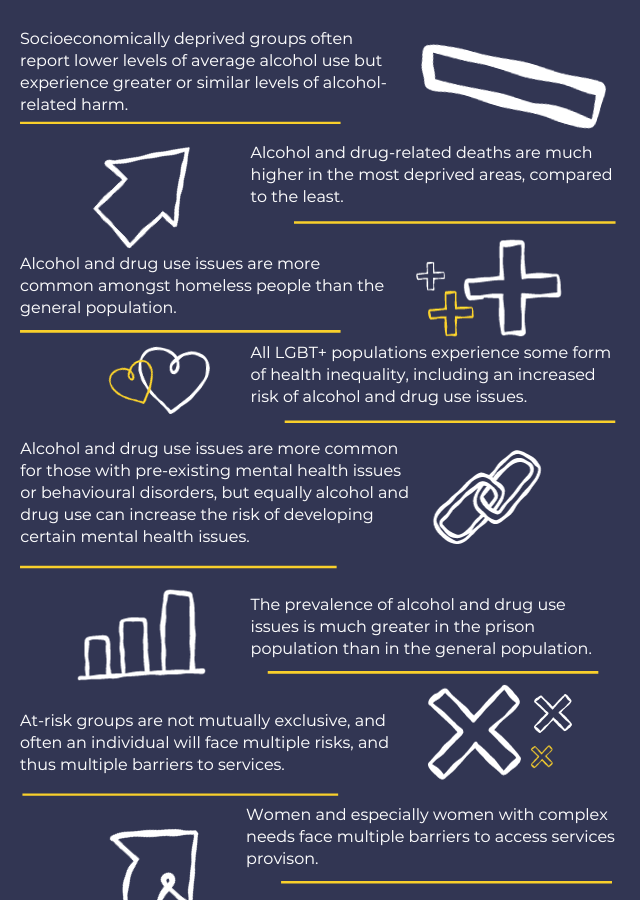
This briefing covers populations that are at greater risk of alcohol and drug related harms. It provides information on each population, as well as evidence relating to what specific interventions are recommended for each. The five main at-risk groups that have been identified are:
- People experiencing or at risk of deprivation, poverty and homelessness
- LGBTQ+ people
- People with mental health issues and / or behavioural disorders
- People involved with Criminal Justice services
- People with experience of interpersonal violence
This list should not be taken to be exhaustive, and other at-risk groups should be considered. For example, older adults and vulnerable young people such as those who are care experienced. What works for at-risk populations is likely to overlap considerably with what works for the general population in reducing alcohol and drug-related harms and this briefing should be read in conjunction with the life-stage briefings where appropriate. Any intervention for at-risk groups should also be based on the key themes detailed in the separate Evidence Briefings, including whole systems; person-centred approaches; gendered approaches and trauma informed practice.
While there are a number of good practice examples as to what works for different at-risk groups there is still a considerable need and opportunity to further grow the evidence base and to add to the case study databank for each at-risk group.
Need to Know and Key Findings
- Good Practice
- Potential Stakeholders
- Homelessness services and housing providers
- LGBT+ Services
- All health professionals
- Scottish Prison Service
- Third sector
- Alcohol and drug services
- Mental health services
- Police Scotland
- Service users / peer involvement
- Social work
- Women’s Specialist Services
- Community Safety and Justice Services
- Full Evidence Briefing
To view the full Evidence Briefing for At Risk Groups and Vulnerabilities People please click HERE.

